 “Mr Bhagwat wasn’t suggesting that rape was not prevalent in the geographical zones we choose to call Bharat. His intervention was based on the belief that traditional Bharatiya values deified women while cosmopolitan India, nurtured on an overdose of consumerism and moral relativism, was inclined to see females as mere commodities.” – Swapan Dasguta
“Mr Bhagwat wasn’t suggesting that rape was not prevalent in the geographical zones we choose to call Bharat. His intervention was based on the belief that traditional Bharatiya values deified women while cosmopolitan India, nurtured on an overdose of consumerism and moral relativism, was inclined to see females as mere commodities.” – Swapan Dasguta
 The social divide that is said to exist between Bharat and India has often been used to score debating points. Rashtriya Swayamsevak Sangh chief Mohan Bhagwat was, arguably, guilty of this needless game of one-upmanship when, in response to a question, he told a gathering in Silchar (Assam) that rape was essentially India’s problem and not a Bharatiya problem.
The social divide that is said to exist between Bharat and India has often been used to score debating points. Rashtriya Swayamsevak Sangh chief Mohan Bhagwat was, arguably, guilty of this needless game of one-upmanship when, in response to a question, he told a gathering in Silchar (Assam) that rape was essentially India’s problem and not a Bharatiya problem.
If the issue hadn’t been so emotive and the media not in constant search of a whipping boy, it is likely that the comment wouldn’t have attracted so much attention. Mr Bhagwat wasn’t suggesting that rape was not prevalent in the geographical zones we choose to call Bharat. His intervention was based on the belief that traditional Bharatiya values deified women while cosmopolitan India, nurtured on an overdose of consumerism and moral relativism, was inclined to see females as mere commodities.
 Without imputing motives to the RSS chief or charging him with antediluvian proclivities, it is necessary to emphasise that the idealisation of a pristine, pure and noble Bharatiya ethos is certain to be challenged. Regardless of what may have existed in a distant Golden Age, the fact is that there are many features of actually existing Bharat (presuming it exists both apart from and in opposition to India) that would seem repugnant to many, not least women. What often passes off as “custom” and “tradition” by the likes of the high-handed khap panchayats are, to say the least, reprehensible. Indeed, these bodies are the 21st-century versions of those who so resolutely defended the right of some Hindu communities to practise sati till as late as the mid-19th century. And yet who can deny that these upholders of inherited values aren’t more Bharat than India? Just as everything modern doesn’t always constitute enlightenment, everything traditional isn’t the filtered repository of good practices.
Without imputing motives to the RSS chief or charging him with antediluvian proclivities, it is necessary to emphasise that the idealisation of a pristine, pure and noble Bharatiya ethos is certain to be challenged. Regardless of what may have existed in a distant Golden Age, the fact is that there are many features of actually existing Bharat (presuming it exists both apart from and in opposition to India) that would seem repugnant to many, not least women. What often passes off as “custom” and “tradition” by the likes of the high-handed khap panchayats are, to say the least, reprehensible. Indeed, these bodies are the 21st-century versions of those who so resolutely defended the right of some Hindu communities to practise sati till as late as the mid-19th century. And yet who can deny that these upholders of inherited values aren’t more Bharat than India? Just as everything modern doesn’t always constitute enlightenment, everything traditional isn’t the filtered repository of good practices.
 That the deracinated India, unsure of its self-identity that we often experience today is very troubling is undeniable. Over the past two decades or so, India has witnessed more cumulative economic growth than took place in the past 100 years. This remarkable transformation within a relatively short time has had both beneficial and negative consequences. The rapid growth of urbanisation and the detachment of large numbers of people from their traditional moorings have, for example, led to a spate of social problems, including the harassment and molestation of women. Likewise, the huge enlargement of the role of the state has eroded the role of the community and produced a huge mass of atomised individuals who are partially aware of their rights but unmindful of their corresponding obligations to society. In recent years there has emerged a body of well-meaning individuals who profess to represent “civil society”. But to what extent are these bodies more representative than the “vote banks” of political parties?
That the deracinated India, unsure of its self-identity that we often experience today is very troubling is undeniable. Over the past two decades or so, India has witnessed more cumulative economic growth than took place in the past 100 years. This remarkable transformation within a relatively short time has had both beneficial and negative consequences. The rapid growth of urbanisation and the detachment of large numbers of people from their traditional moorings have, for example, led to a spate of social problems, including the harassment and molestation of women. Likewise, the huge enlargement of the role of the state has eroded the role of the community and produced a huge mass of atomised individuals who are partially aware of their rights but unmindful of their corresponding obligations to society. In recent years there has emerged a body of well-meaning individuals who profess to represent “civil society”. But to what extent are these bodies more representative than the “vote banks” of political parties?
 The social map of India is in the process of transition. There is undoubtedly a “new” India and an older Bharat but the lines of separation have been blurred to such an extent that we can no longer talk meaningfully of two autonomous and self-contained categories. This is not something unique. The tiny island of Britain, for example, experienced a remarkable transformation with the onset of the Industrial Revolution in the early 19th century. At that time, concerned citizens despaired of the emergence of “two nations”. There was a rural Britain that appeared to be hierarchical and unchanging; and there was an urban Britain that appeared to many to be the Devil’s workshop.
The social map of India is in the process of transition. There is undoubtedly a “new” India and an older Bharat but the lines of separation have been blurred to such an extent that we can no longer talk meaningfully of two autonomous and self-contained categories. This is not something unique. The tiny island of Britain, for example, experienced a remarkable transformation with the onset of the Industrial Revolution in the early 19th century. At that time, concerned citizens despaired of the emergence of “two nations”. There was a rural Britain that appeared to be hierarchical and unchanging; and there was an urban Britain that appeared to many to be the Devil’s workshop.
Curiously, the Bharat-India divide that Mr Bhagwat alluded to, is not new. Throughout the late-19th and early-20th centuries, British administrators spoke incessantly about a “real” India that existed in the countryside and a new, insolent India that was proving to be a headache for the sarkar in the towns and cities. Fiercely imbued with the idea that the British Empire was a sacred mission, British administrators were conscious of the need to get their priorities right. “While I have sought to understand the needs and to espouse the interests of each of India’s various races and creeds,” said Lord Curzon, the Viceroy who had the most pronounced sense of India’s “sacredness” to the Empire, “my eye has always rested on a larger canvas crowded with untold numbers, the real people of India.”
 A similar sense of the “real” India which existed outside the cantonments, Civil Lines and the law courts full of “seditious” babus also moved Rudyard Kipling, arguably the finest chronicler of British India. “Underneath our excellent administrative system; under piles of reports and statistics; the thousands of troops…” he wrote, “runs wholly untouched and unaffected the lives of the people of the land — a life full of impossibilities and wonders as the Arabian nights … immediately outside of our own English life, is the dark and crooked and fantastic, and wicked, and awe-inspiring life of the native.” For Kipling, there seemed to be three Indias: the India of Mahbub Ali the horse trader, the widowed rani of Kulu and the restless Kim; the India of the British conquerors which was predictable and often vacuous; and the hybrid India of “our progressive Aryan brother, the Oxford B.A. who will eat with you, ride with you and talk to your wife (but) won’t dare to fly in the face of his ‘custom’.”
A similar sense of the “real” India which existed outside the cantonments, Civil Lines and the law courts full of “seditious” babus also moved Rudyard Kipling, arguably the finest chronicler of British India. “Underneath our excellent administrative system; under piles of reports and statistics; the thousands of troops…” he wrote, “runs wholly untouched and unaffected the lives of the people of the land — a life full of impossibilities and wonders as the Arabian nights … immediately outside of our own English life, is the dark and crooked and fantastic, and wicked, and awe-inspiring life of the native.” For Kipling, there seemed to be three Indias: the India of Mahbub Ali the horse trader, the widowed rani of Kulu and the restless Kim; the India of the British conquerors which was predictable and often vacuous; and the hybrid India of “our progressive Aryan brother, the Oxford B.A. who will eat with you, ride with you and talk to your wife (but) won’t dare to fly in the face of his ‘custom’.”
In a strange sort of way, the Bharat-India divide replicates this romantic but condescending view of India. – The Asian Age, 11 January 2013
» Swapan Dasgupta is a senior journalist who has held editorial posts with The Statesman, The Daily Telegraph, The Times of India, The Indian Express and most recently India Today, where he was Managing Editor till 2003. He has been published in The Pioneer, The Telegraph, Dainik Jagran, The Times of India, The New Indian Express, Outlook, The Free Press Journal and several other newspapers and magazines. Along with Arun Shourie and Ashok Malik he is widely credited for breaking the left liberal stagnation in the Indian intellectual establishment.
Filed under: india | Tagged: bharatiya, culture, ethics, eve teasing, globalisation, hindu, hindu values, hindutva, history, indian history, lifestyle, mohan bhagwat, nehruism, nehruvian secularism, politics, population displacement, psychological warfare, psychology, rape, RSS, sanskritisation, secularism, society, urbanisation, values |


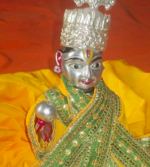






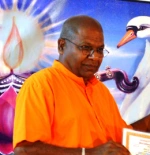

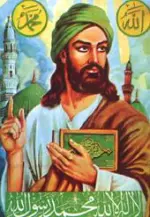
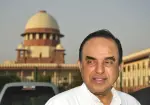
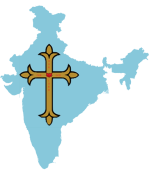

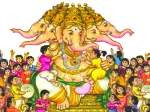



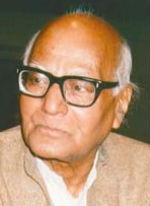

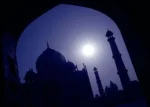




I mean the language, which the hostile alien rulers and brain washed native Indians understood.
LikeLike
Swapan Dasgupta is confused. Bharat, like Arya is nobility and values.
Bhartiyas are in nagars, villages, cities, mountains and in foreign countries as non resident Bhartiyas. Bhartiyas include our Hindu brothers of light and dark colors resident and non residents of different cultures who have found their true noble values. Bhartiyas don’t live in villages. Actually cities Bhartiyas were right there like Vivekananda, Arvind, Subhas, Patel etc. Who were just trained as Indians to speak and act in the language and action of hostile alien rulers and brain washed native Indians. So, respect for women is in blood of Bhartiya and not in dumb Indians.
LikeLike
What Mr Bhagwat probably had in mind was Hindu value system of BHARAT as opposed to modern cultural influences [bad] like commercial exploitation of young Hindu women [pornography,dance bars,item songs…] alchoholism,beef eating,violence etc on young minds.Our youth from cities and towns are exposed to these influences that lead to violence against women.A good Hindu,devoted to Hindu value systems can never think of violating a woman’s modesty.People,Hindus,Muslims,Christians caught in such acts appear to be the people living on the margins.Eg how many middle class Hindu [upholders of Hindu value system] youth were caught and charged with rape in last 10 years?
LikeLike
As far as from what i’ve studied, sati was very much a voluntary action taken by a woman (out of extreme devotion towards her husband) that she simply could not even think of leading the material life without her husband. Even today we can see (though very minimal) sati taking place in different places in the form of suicide. It was never practiced throughout the nation, but during later periods, it merely became a ritual whereby women were forced to perform sati and that’s exactly when it became a social issue. Our scriptures neither mention about it nor do they endorse it. IMO there is nothing wrong is allowing it if the concerned man/woman is matured enough to voluntarily take such a decision without giving any space for sentiments. The same thing holds true with even Jeeva Samaadhi by saints. The Western mindset that we’ve currently inherited is so materialistic that it simply doesn’t have enough capacity or space to understand such things. It never even attempts to go beyond the five senses. Unfortunately our Vedic civilization is kind of an overkill for modern times. I’m only reminded of a famous quote by late neurologist Dr. B Ramamurthy which he mentioned somewhere in the beginning of 2000. “Modern science has to mature at least another 25 more years in to the future in order to come to terms with Vedic thoughts…”
LikeLike
Swapan is right about the impact of rapid industrialisation/urbanisation on the rootless youth of contemporary India. He is also right in pointing out that Mohan Bhagawat was referring to the dignity and honour of women in ancient Bharat.
The jury is still out on when and why sati originated in India and the extent to which the orthodox community upheld it. It is also possible that after the barbarian invasions when the Rajput women committed jauhar the custom became settled practice.
The question now is whether India should go the way of Britain.
Symbolically it might be more helpful not to create that schism between the words India and Bharat. After all, India is simply the anglicised version of Sindhu, which was mentioned even in the Rig Veda.
Should Hindus cede that word to the splittist forces? If not, how does the country integrate in actual practice (not just symbolically) the two meanings of India and Bharat? This is the challenge.
Apart from the horrific breakdown of values as seen in the constant rape cases (which seem to be continuing) the raising of the sons of Bharat is a central issue.
LikeLike